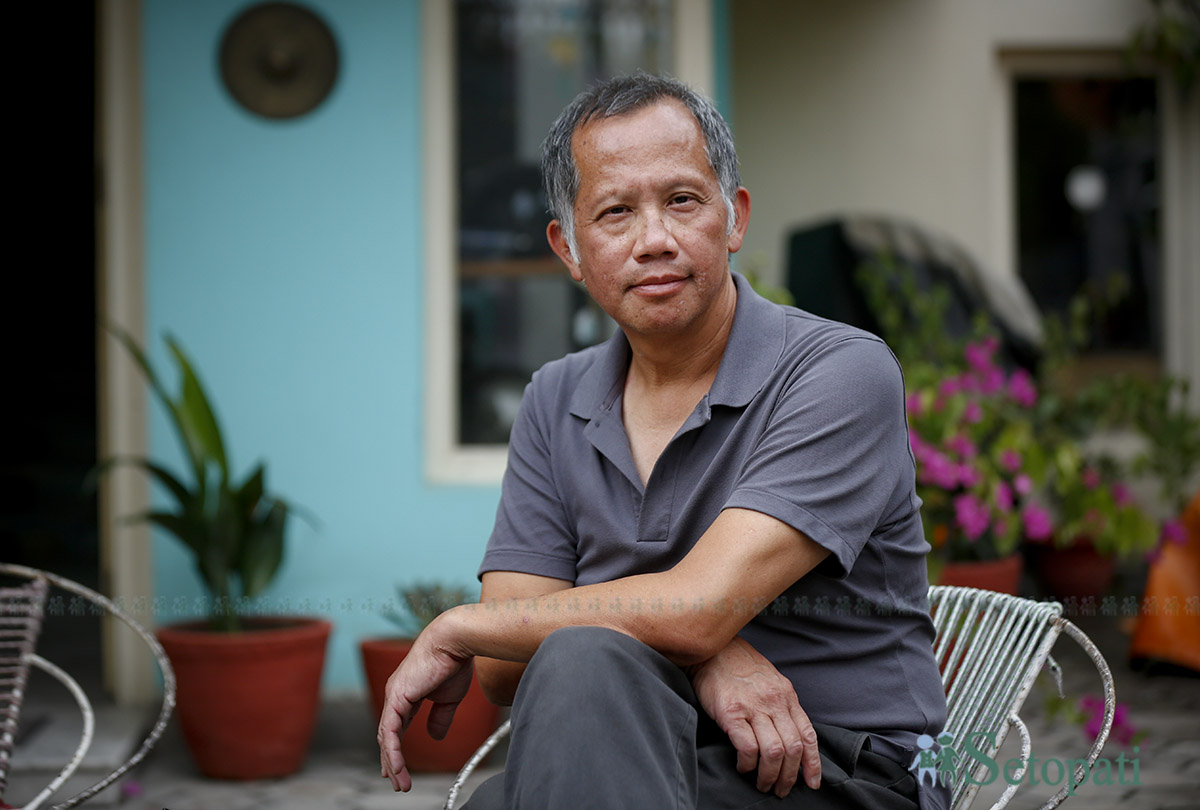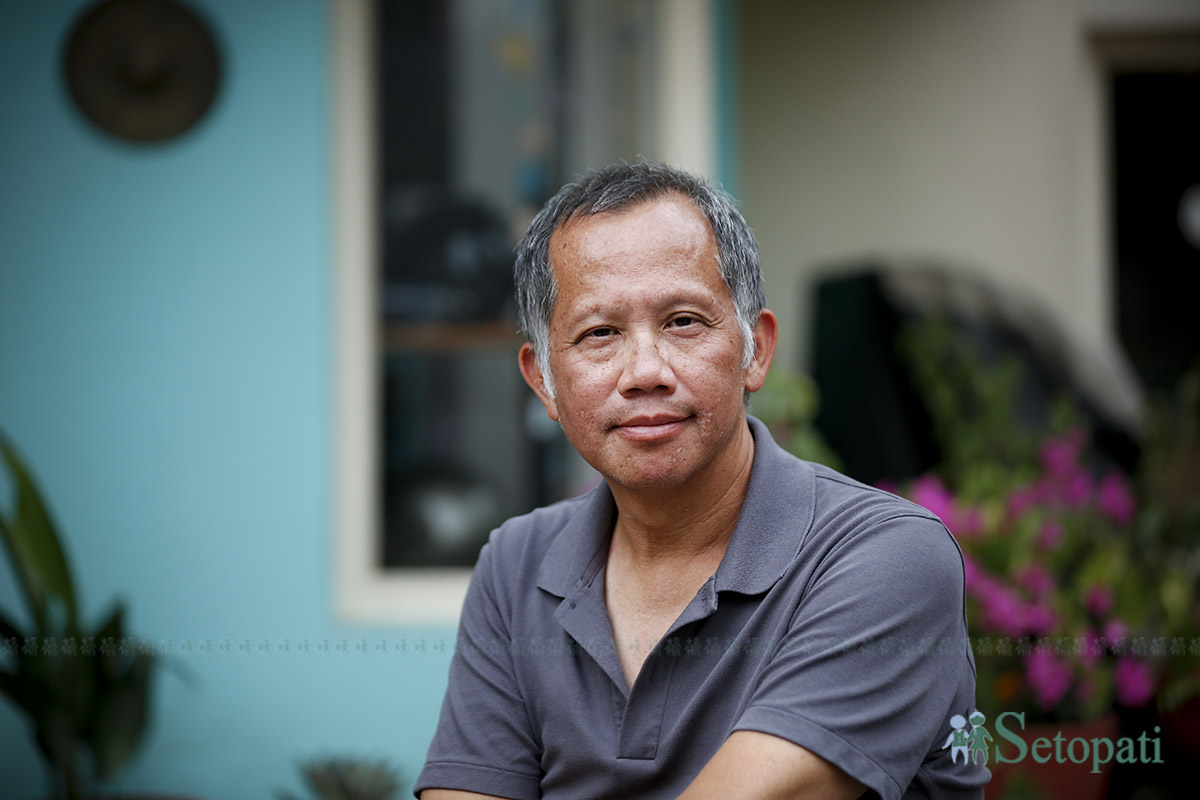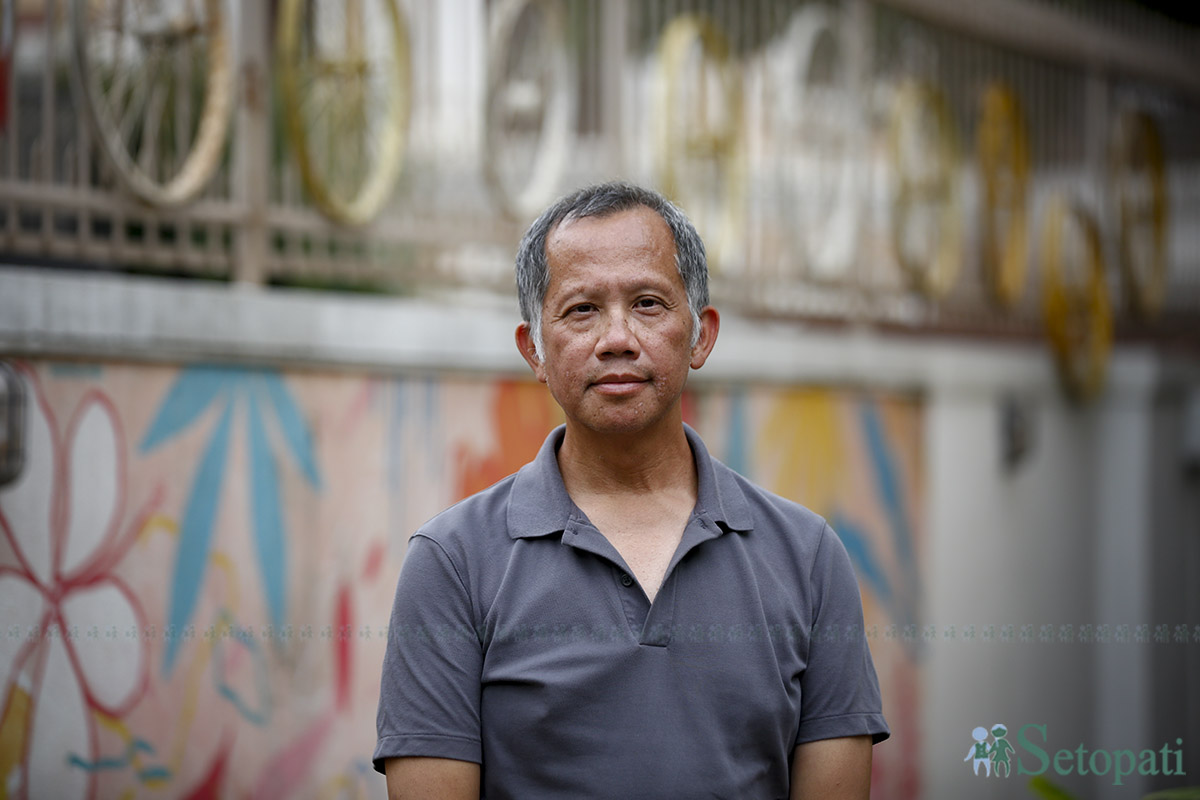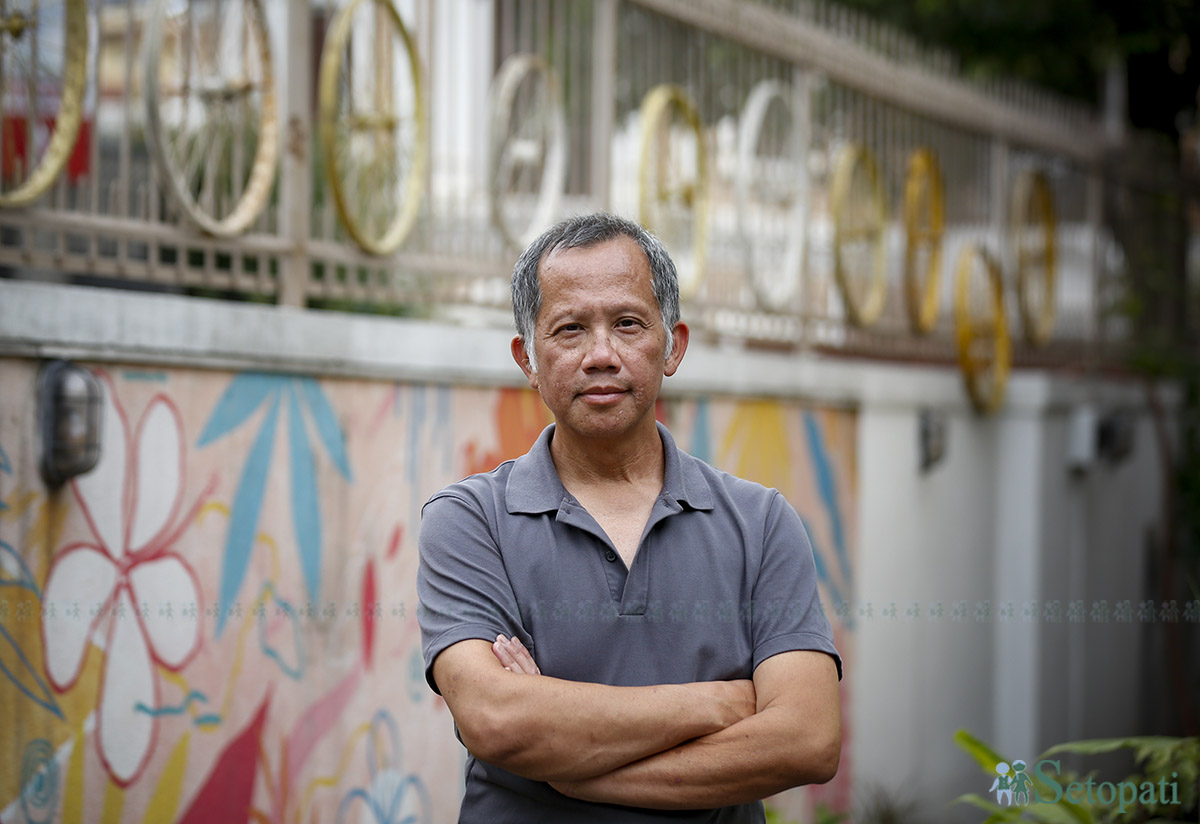Renowned American photographer Chan Chao believes all countries and all people of the world are connected in some way.
Their languages may differ, their clothing may be different. Their ethnicity, religion, and culture may vary in many ways. But there are certain threads that connect all nations of the world.
What are those threads that tie the whole world together?
Chao's answer is: migrant workers.
In pursuit of this quest, he came to Nepal a few weeks ago. During his short stay here, he traveled around Kathmandu and nearby villages, photographing many Nepali migrant workers. He then returned to the United States., carrying those photographs as mementos.
Chao had heard about Nepal long ago. Just like many foreigners, Chao was fascinated by the majestic Himalayas. Yet it was less than a year ago that he started making plans to visit Nepal for photography.
“Right now, many Nepalis are working abroad. Once I began working on such workers, the opportunity to come to Nepal arose,” said Chao, who came to Nepal for the first time.

There’s a personal reason behind his interest in this topic—he is a migrant himself.
His family fled Myanmar (Burma) in 1978 during the country’s internal conflict and migrated to the US. At that time, he was 12 years old. He grew up and studied there.
As he grew older, he became increasingly interested in photography and later made a career in it.
“I enjoyed meeting people. I liked seeing my name published in newspapers and magazines. I was also tempted by the fact that being a photographer meant you could attend concerts and events for free,” Chao said with a laugh, remembering the days when he started photography at the age of 20.
“I didn’t even know the basics of photography. I learned the technical aspects from my friends and gradually got into this field.”
In the beginning, Chao's photographs were published in his college magazine. Gradually, he began leaning toward professional photography.
He understood a key strength of photography: photos make it easier to connect with people.
With that understanding, Chao devoted all his attention to his craft. His photos were published in national and international magazines, including in Italy and Canada. But over time, he began to feel that photos printed in magazines have a short life.
“There’s a rush in journalism. The photos published in newspapers and magazines are talked about for only few days. Once an assignment is over, we have to rush to the next. But I wanted to take time and work deeply on a particular subject. I wanted to take photos that would last longer,” he said.
So far, Chao has published four photo books – Burma: Something Went Wrong, Letter from PLF, Echo, and Two Places on Earth.
The first two books are collections of photographs he took in Burma. When he turned 30, he wanted to go meet relatives in Burma. Despite trying twice, he couldn’t get a visa. So he entered Burma illegally via Thailand.

“When I went there, I had no photography project in mind. I just wanted to meet my uncles, aunts, cousins, nieces, and nephews. I had a camera, so I also used to take pictures,” he said.
“In the mornings and evenings, I took photographs. During the day, I wandered around camps, talking to people about Burma’s politics and history.”
He added, “Later, I felt the photos I took were quite good. I decided to turn it into a project.”
He traveled to Burma twice via the Thailand border and a third time via India. His earlier experiences made the second trip easier. He brought 12 portrait photos from earlier trips and showed them to camp leaders.
“Using people’s images made it easier for me to explain what I was doing. Otherwise, it might have been difficult for them to understand,” he said.
When he tried to take the photos back from the camp leaders, they said, “Wait! We haven’t even looked at them properly yet!”
This made Chao realize the importance of portrait photography.
“From that experience, I understood how powerful a person’s eyes, facial expressions, and emotions can be. I realized how people connect through portraits. I decided to take up portrait photography so that people’s faces themselves express the stories I’m trying to tell. Even if I photograph a stranger, anyone can relate to it. Portrait photography feels like a universal language to me.”
This is how his first book, Burma: Something Went Wrong, came about.
His second book, Letter from PLF, also emerged from someone he met in one of the camps in Burma.
While staying there, he had to sleep in rows. He developed a close connection with the person he slept beside. Even after returning to the US, they continued communicating through letters. Those letters and photos became the core of the book.
Chao gained much recognition from these Burma projects. Because of that fame, he was offered a new project centered on nude photography, which led to his third book, Echo.
The fourth book, Two Places on Earth, focused on United Nations peacekeepers in Cyprus and female prisoners in Peru. In Cyprus, people from 17 countries were brought together due to conflict and peacekeeping. In Peru, female prisoners from Europe, America, and Asia were connected due to cocaine trafficking.
These projects show how much Chao values human connections. In all his work, he prioritizes portrait photography.
Portrait photography captures a person’s face, expression, and clothing. However, it may sometimes miss the context of surrounding events.
He says, “I felt I should have also captured the activities happening there when I visited Burma. But a photographer has to decide their style. In motion photography, your subject becomes the event, not the person. I feel you may not be able to understand or portray that person well in such cases.”
Chao, who has done portrait photography for nearly three decades, admits, “Both motion and portrait photography have their pros and cons. Sometimes I wish I could do both. But as a photographer, I had to choose a path. I feel portraits speak to me directly, which is why I enjoy doing them.”
Most people want to smile in front of the camera, regardless of their inner pain. But Chao prefers to capture people’s true emotions.
How is that possible?
He shared an experience:
“Once, while photographing a female prisoner, I asked her not to smile. I told her to express how she really felt. At first, she was skeptical. But when I showed her the photos, she was happy to see her emotions reflected on her face.”

Another specialty about Chao is that he prefers analog (film) photography over digital. However, for the past 4–5 years, he has been using digital cameras.
“Analog is expensive and time-consuming. But I still love it because the outcome isn’t the same as digital. The chemical used and how it’s processed makes a big difference. It’s a fun process,” he said.
“Nowadays, even if you shoot on analog, you still need to scan and digitize it. Ultimately, it becomes a digital file, so I’ve started working digitally.”
Although he has switched from analog to digital, Chao still teaches analog photography to his students. He currently teaches at George Washington University and Maryland Institute College of Art in the US.
When asked about AI photography, Chao said he doesn’t believe AI can replace photographers.
“AI may generate human images, but it can’t recreate human skin. Real human skin has imperfections, texture, and irregular tones. AI can’t replicate that. It creates overly uniform details,” he said.
Now let’s talk about his trip to Nepal.
Two weeks ago, upon arriving in Nepal, Chao connected with Nepali journalist Janakraj Sapkota. Chao expressed his desire to visit areas near Kathmandu and photograph migrant workers.
The next morning at 6 a.m., they went to Melamchi. After taking some photos there, they went to Nagarkot the following day.
Chao still remembers the morning in Nagarkot.
Showing a landscape photo he took on his mobile from the hotel balcony, he said:
“The view I saw from there amazed me. I had never seen such a scene before. I usually don’t send photos I take to my family, but this one I had to. My daughter saw the photo and said, ‘You should have taken me there too.’”
After photographing migrant workers in Melamchi and Nagarkot, Chao went to Tribhuvan International Airport and took pictures of Nepali workers preparing to leave the country.
He also visited the Department of Labor, where he photographed people lining up for foreign employment.
Aside from that, he shared his experiences in some photography workshops and then returned home.
Chao wants to turn this migrant worker project into a multinational one. He now plans to go to Hong Kong and photograph Filipinos working there.
“When I visited Hong Kong once, I saw Filipinos everywhere—on the streets, stairs, near ponds. Later, I learned that it was Sunday, their day off, so they were all gathered. I want to meet them and take photos,” he said.
He also wishes to visit South America and countries like Nicaragua.
I asked him, “Why do you usually choose underdeveloped countries?”
Chao smiled and gave a thought-provoking answer, “I feel that people in wealthy countries don’t live in the real world. They live in a materialistic bubble. They either don’t see what’s happening around them, or choose to ignore it. That’s why I like going to countries where the communities, people, and lifestyles aren’t artificial. I want to capture their stories in my camera.”
He still wants to explore more subjects that connect the world and people—such as religion, culture, and trade—but hasn’t yet decided on a specific theme.
“So, when will you come to Nepal again?” I asked as we were parting.
He replied, “I really loved the people, architecture, culture, and weather here. With such diverse communities, sometimes I didn’t even feel like I was in an Asian country. My first experience in Nepal was satisfying. But I probably won’t come back here to take photos. I’ve already taken the photos I needed for this project. If I return, it’ll only be as a tourist, not as a photographer.”
Note: Chao's family fled Myanmar in 1978, not in 1998 as incorrectly stated in an earlier version of this story. Also, Chao no longer teaches at American University.

